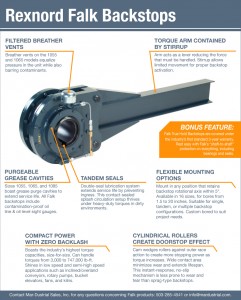 In any mechanical power transmission product, gaskets are used to protect the areas where two different surfaces join together. Gaskets provide a seal between the mating surfaces, cushioning them from each other and preventing erosion and leakage, which could ultimately necessitate an early gearbox repair.
In any mechanical power transmission product, gaskets are used to protect the areas where two different surfaces join together. Gaskets provide a seal between the mating surfaces, cushioning them from each other and preventing erosion and leakage, which could ultimately necessitate an early gearbox repair.
Spiral wound gaskets are one of the most commonly used metal gaskets used for mechanical power transmission products, mostly because of their versatility and reliability. They’re made by wrapping alternating layers of metal with flexible filler, such as PTFE; the metal provides structural support, while the filler creates the seal. The material used as filler typically varies depending on the industry and operating conditions.
While they’re most often used in circular form, they are available in a variety of shapes, including rectangular, oval, diamond and pear. Although criticized for having a higher price tag than conventional gaskets, spiral wound gaskets offer a number of advantages that offset the price, including:
Enhanced resilience. Spiral wound gaskets have a chevron-shaped profile, which acts like a spring and offers greater resilience, allowing them to perform better than conventional gaskets.
Lower risk. Because of their strength and reliability as a sealing element, spiral wound gaskets reduce the risk of machinery failure and lower the chances of needing an untimely gearbox repair.
High pressure tolerance. Spiral wound gaskets are uniquely able to tolerate fluctuations in pressure and temperature, which makes them adaptable to a variety of operating conditions. They stand up well in high-pressure, high-temperature and highly corrosive environments.
Posted under Products/Services on Tuesday, May 24th, 2011
